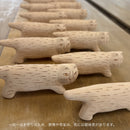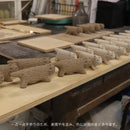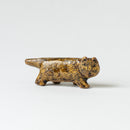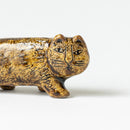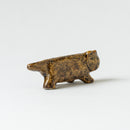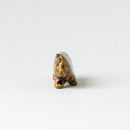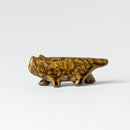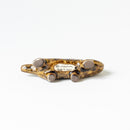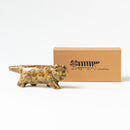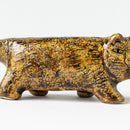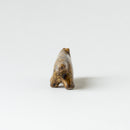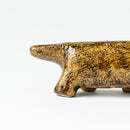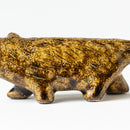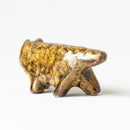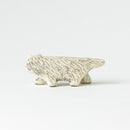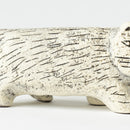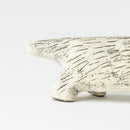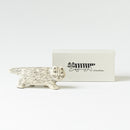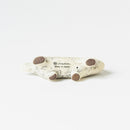Lisa cat from Japan
Born in Tamba!

I am Lisa cat from Tamba.
The third installment of the "Lisa Cat" project, which travels all over the country, reaches Tamba Sasayama City, Hyogo Prefecture. Cats number 5 and number 6 were born in Japan's leading ancient kilns!
The stray cats that live by shaking the shinogi are a technique based on the traditional expression technique called shinogi that has been created.
The proud Lisa cat has a "samurai spirit" that is well-carved with roughness and pride, and the white "kirishiro" and red clay "tsuchimasa". Please be sure to be shy!


Dignified and rough. Lisa Cat competes
Tanba stray cats are decorated with thin needles using the method of "Shinogi," one of the decorations for ceramics. A roe is a technique in which the surface of a ceramic is carved into a carved pattern, and is characterized by sharp carving marks reminiscent of the ridgeline of a sword.
By comparing this technique to cat's fur, the presence of a rough but proud stray cat that seems to have survived the battle has been created.
The expressions and patterns are hand-carved by each craftsman.
Each child is a cat that is only one in the world.

The facial expressions and fur are hand-drawn.


The two animals' individuality: "Kirishiro" and "Tsuchimasa"
 Just be careful
Just be careful
The red soil base is finished with white makeup. When you apply the sponge to a surface with white muddy clay, it creates a rough texture and natural unevenness.
The rough texture reminds you of the scenery of "Tanba Mite" on a cold morning.
 Tsuchimasa
Tsuchimasa
The traditional Tamba ware is finished in a traditional Tamba ware style with white makeup applied to the red clay of Tamba and then "candy glaze". This is a fish that gives you a sense of the strength of the soil.
Tanba ware

Tamba ware is produced in the area around Tamba Sasayama City, Hyogo Prefecture. Tamba ware is one of the six ancient Japanese kilns along with Seto, Shigaraki, Tokoname, Echizen and Bizen, and boasts a history of approximately 850 years. This is Japan's oldest pottery with a history of approximately 850 years, counted as one of the six ancient kilns in Japan. It features "natural glaze" in which natural ash becomes glaze, and "kiln transformation" in color that occurs in a kiln, and its deep colors and rustic, warm texture are attractive. Many pots are used in daily life, such as pots, tea utensils, and plates, and many potters continue to make them today.

Behind the scenes of the production
Until the Tamba Lisa Cat was completed, we have made over 50 prototypes, including design, shape and glaze selection. It took about a year from the first prototype to the release!
After repeated trial and error in carving cat faces and carving fur, two animals have finally been born that are satisfying. These two cats certainly contain the spirit of the Tamba craftsmen and Lisa.

Sample cats until the design is confirmed.
We tried out various glazes and patterns to tackle the stray cat-like feel.


Samples of facial expressions and fur. He focused on his sharp face and rough fur.
It comes in a box for cats


Kirishiro will be delivered in a white cosmetic box inspired by Tanba fog, while Tsuchimasa will be delivered in a brown cosmetic box inspired by red clay.
Lisa loved Japanese pottery, huge, huge!
Lisa loved Japanese pottery so much that no matter how many, big, big, big, big, big, big, no matter how many. That's why I wanted to create Lisa's works at potterys all over Japan, which was something that had been around since the beginning when I started working with her. At first, it's a dream story that appears as usual at the end of the conversation. Time passes, and it's not a dream, it's a plan you absolutely want to make.
Learn more on the Lisa Cat special website!
Interview: Listen!
We are currently publishing an interview with the third generation Ogami couple at Tamba ware "Shoyo Kiln."
Please take a look at the behind-the-scenes stories and their feelings for Lisa Cat on our special website.

Japan's Lisa Cat Lineup
Delivery dates may vary from one to the next. Please be sure to check each product page.






























